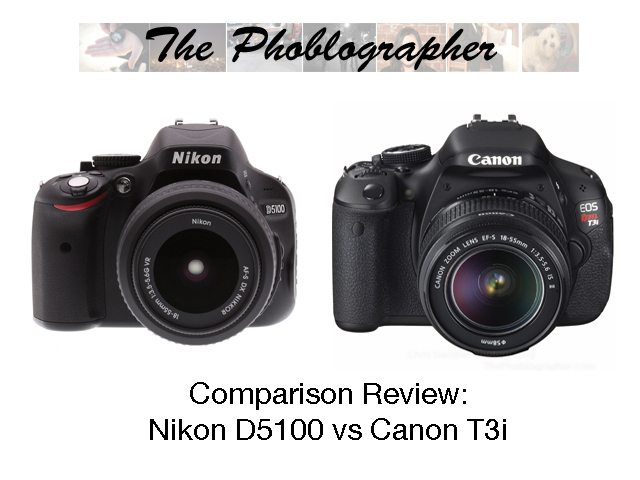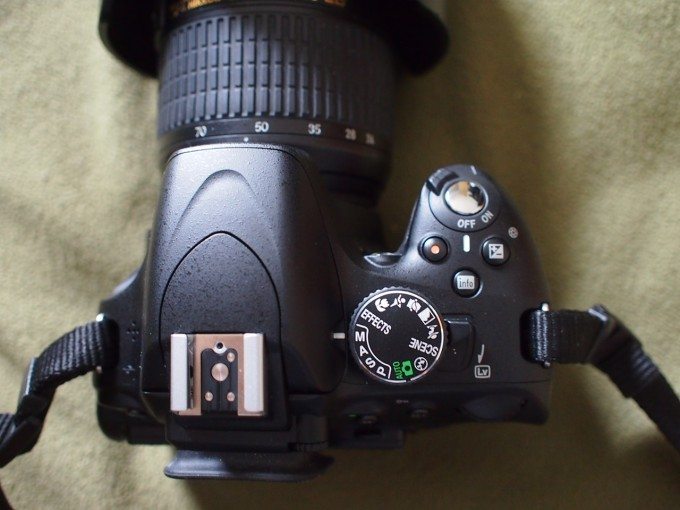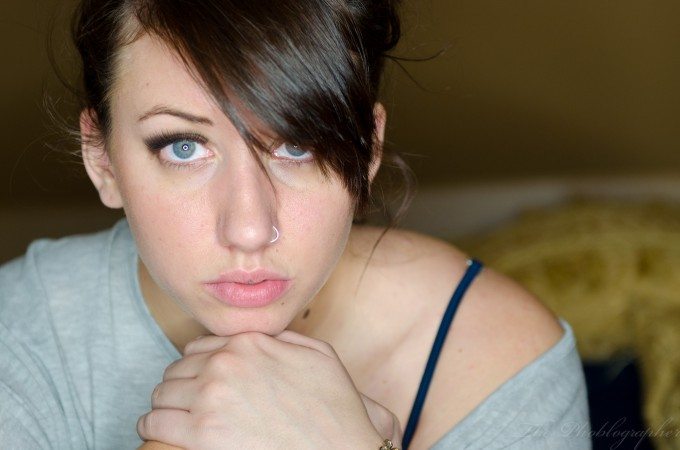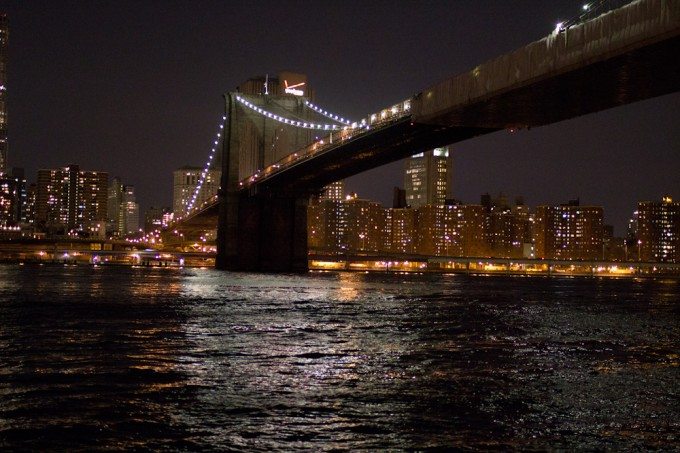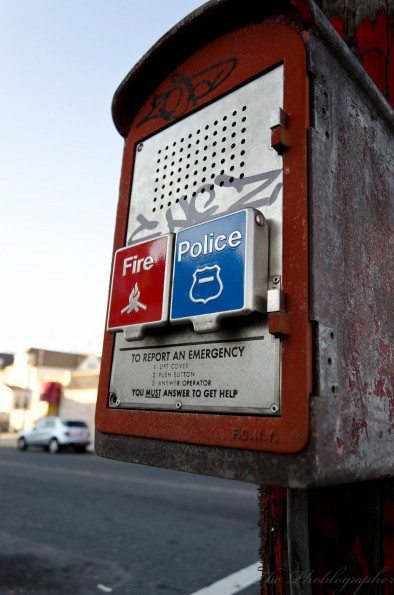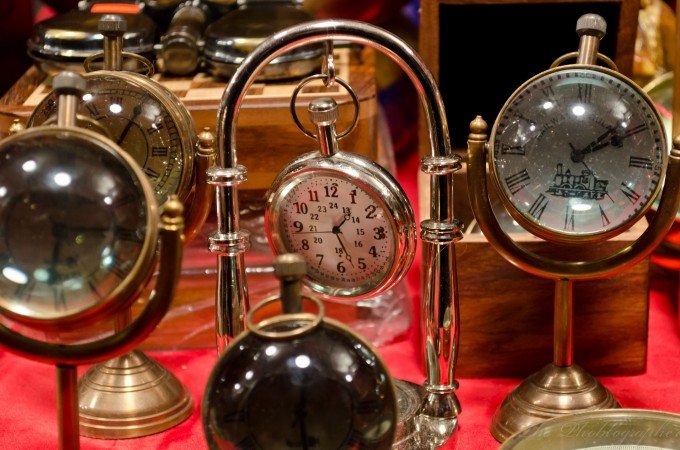Last Updated on 12/13/2011 by Chris Gampat
We finished reviewing the Nikon D5100 and after using that camera and it’s main competitor, the Canon T3i, for a long time it is now time for a full on comparison review. Though I’ve personally purchased the D5100, it is because I’m already fully invested into Canon’s system and I need to build up a Nikon system in order to review more products for this site.
With that said, which one is right for you: The Canon T3i or Nikon D5100?
Complete Postings
T3i
Day 1– Getting a feel for the camera.
Day 2– testing the camera’s creative filters. While they make great prints, I didn’t care much for them to be honest. The reason for this is because I prefer the process of stepping into the digital darkroom and creating the art myself.
Day 3– street photography at night using the high ISO settings. The results were really quite good.
Day 4– shooting portraits using a casual approach to capture candid emotions. Afterward I used Lightroom 3 to tweak the image quality.
Day 5– Event shooting, portraits with wireless flash control, and more night scenes.
D5100
This post has a single long and thorough review because of the fact that we changed our editorial standards. However, it has been used just as long as just as thoroughly with various lenses and accessories.
Tech Specs
Specs on both cameras have been pulled from B&H Photo’s listings of the cameras.
| AV Recording | |
|---|---|
| Video Recording | Yes, NTSC/PAL |
| Aspect Ratio | 4:3, 16:9 |
| Audio Recording | With Video, Mono |
| Focus Control | |
|---|---|
| Focus Type | Auto & Manual |
| Viewfinder/Display | |
|---|---|
| Viewfinder Type | Pentamirror |
| Viewfinder Coverage | 95% |
| Display Screen | 3″ Rear Screen LCD (921000) |
| Screen Coverage | 100% |
| Flash | |
|---|---|
| Max Sync Speed | 1 / 200 sec |
| Continuous Shooting | Up to 4 fps |
| External Flash Connection | Hot Shoe |
| Performance | |
|---|---|
| Self Timer | 2 sec, 5 sec, 10 sec, 20 sec |
| Connectivity | 1/8″ Microphone, AV Output, HDMI C (Mini), USB 2.0 |
| Power | |
|---|---|
| Battery | 1x EN-EL14 Rechargeable Lithium-Ion Battery Pack |
| AC Power Adapter | EH-5a/5b (Included) 1 |
| Operating/Storage Temperature | 32 to 104 °F (0 to 40 °C) |
| Physical | |
|---|---|
| Dimensions (WxHxD) | 5 x 3.8 x 3.1″ / 12.70 x 9.65 x 7.87 cm |
| Weight | 19.7 oz / 558 g Camera body only |
| AV Recording | |
|---|---|
| Video Recording | Yes |
| Aspect Ratio | 4:3, 16:9 |
| Audio Recording | With Video, Mono |
| Focus Control | |
|---|---|
| Focus Type | Auto & Manual |
| Viewfinder/Display | |
|---|---|
| Viewfinder Type | Pentamirror |
| Viewfinder Coverage | 95% |
| Flash | |
|---|---|
| Max Sync Speed | 1 / 200 sec |
| External Flash Connection | Hot Shoe |
| Performance | |
|---|---|
| Self Timer | 2 sec, 10 sec |
| Power | |
|---|---|
| Battery | 1x LP-E8 Rechargeable Lithium-Ion Battery Pack |
| AC Power Adapter | ACK-E8 (Optional) |
| Operating/Storage Temperature | 32 to 104 °F (0 to 40 °C) |
| Physical | |
|---|---|
| Dimensions (WxHxD) | 5.2 x 3.9 x 3.1″ / 13.21 x 9.91 x 7.87 cm |
| Weight | 18.2 oz / 516 g Body only |
Ergonomics
Canon T3i: I’ve never been a fan of the Rebels, but this has to be one of the most comfortable Rebels I’ve used. It fits well in my hand though it is still a bit small but I still have very quick access to all the settings that I need. The only one that really requires more extra steps than I’d like is setting the aperture in manual mode. Otherwise, this camera is a piece of cake for anyone no matter what your user experience levels are.
Nikon D5100: Nikon did an excellent job with this camera for its intended audience; and I feel that’s about all they cared about. If you’re more used to using the higher end DSLR cameras from the company, then you’ll probably not warm up to this one as much. There are just way too few buttons and it makes things complicated for users used to lots of buttons and that love direct control.
For the user that is afraid of buttons, set this little camera in auto and you’ll be fine.
Winner: Canon T3i for overall versatility in design.
Autofocusing
Canon T3i: The T3i’s autofocusing seems to be on par with the Canon 5D Mk II’s. If you’re a Mk II user and don’t mind what others hate so much, you’ll live with this. To be fair, it also has tracking to its outer focusing points with certain lenses.
Nikon D5100: Nikon’s D5100 focuses like a champ, but lags a bit sometimes. When it hits a target, it is very accurate. However, it won’t focus with all of Nikon’s lenses. You’ll need AF-S lenses in order to focus with this camera, otherwise you’ll be metering and focusing manually.
What a total shame.
Winner: Nikon’s D5100 takes the cake in this one due to some of the best focusing I’ve seen in an entry level DSLR.
Feature Set
Canon T3i: The T3i offers creative art filters in the form of creative effects, wireless flash control (even a new easy wireless control setting), tracking AF that actually works, full HD video, and an excellent LCD screen. The T3i can also autofocus in video, though sluggishly and by pressing the right button.
Nikon D5100: The D5100 offers 3D tracking focusing, autofocusing in video (though with auto image gain that is quite annoying), a retouch menu for editing and creating creative effects, an flip out LCD screen that is also excellent, and that’s about it.
Winner: The Canon T3i wins for making the feature sets easily accessible and for wireless flash control. If you want to grow as a photographer, I recommend this one.
Metering
Canon T3i: I found that the T3i, like the rest of Canon’s lineup, consistently underexposes a bit. I often needed to overexpose or push the files in post-production.
Nikon D5100: Same as Canon’s. However, spot metering was atrocious.
Winner: Canon T3i by the thinnest hair you can think of.
Image Quality
Canon T3i: The T3i’s files were very impressive to me during event photography, portrait shooting, street shooting, etc. Many readers were also smitten with the images that came out.
Nikon D5100: The D5100’s image quality is also quite good. The colors are deep and though the white balancing isn’t as accurate as it is with Canon’s DSLR, they have a very nice effect.
Winner: The D5100 wins narrowly in this case. You’ll see why soon.
Raw File Versatility
Canon T3i: The Canon T3i’s raw files were very simple to edit. Adjusting the colors, getting rid of noise while maintaining detail, and keeping my images sharp was always quite easy.
Nikon D5100: The D5100’s files are easy to work with for the most part, but working with high ISO files becomes very tough. However, the D5100 has more dynamic range though more than I’d ever need to use since I can get the metering right in the first place.
And that’s what really matters.
Winner: Canon T3i for ease of use.
High ISO Output
Canon T3i: The Canon T3i has very good high ISO output and doesn’t need much cleaning up at all. In fact, I showed an image to a Nikon-using co-worker and his immediate words were, “A Rebel shoots files that clean?”
Yes, I responded.
Nikon D5100: The D5100’s files are cleaner, though not my much. Out of camera files without editing are where the D5100 takes the lead. But when it comes to editing the files for noise and trying to maintain details, you’re better off with the Canon T3i.
Winner: Tie; though this sounds crazy the T3i is for photographers that will edit their files while the D5100 is for those that don’t want to do a much editing.
Cost
This all varies depending on rebates and kits combined with where you’re purchasing from. But in general, I’ve seen the D5100 for a more affordable price point.
Conclusion
This is the toughest choice I’ve ever had to make.
Both cameras perform admirably, and both also have their quirks. As far as usability goes, Canon will have less of a learning curve but the Nikon D5100’s autofocus will actually ensure that you get your intended photo.
As far as video goes, they perform on par to one another, but the auto gain in the image of the D5100 makes a loser. The Canon T3i wins for that one.
Both cameras deliver exceptional images, though Canon has a more forgivable nature with easier to edit files. The Nikon D5100 puts an emphasis on less post-production with more being done in camera.
Canon’s feature set wins over Nikon’s.
In the end, I can create stunning images with both cameras and the various lenses that they both offer use with. However, in the end I need to give this to the Nikon D5100 because I feel that I’ve created better images with it in the short time that I’ve owned it. I’m a portrait photographer though. For street photography, the Canon T3i takes the cake with its superior white balancing algorithms.
Where to Purchase
Please Support The Phoblographer
We love to bring you guys the latest and greatest news and gear related stuff. However, we can’t keep doing that unless we have your continued support. If you would like to purchase any of the items mentioned, please do so by clicking our links first and then purchasing the items as we then get a small portion of the sale to help run the website.


